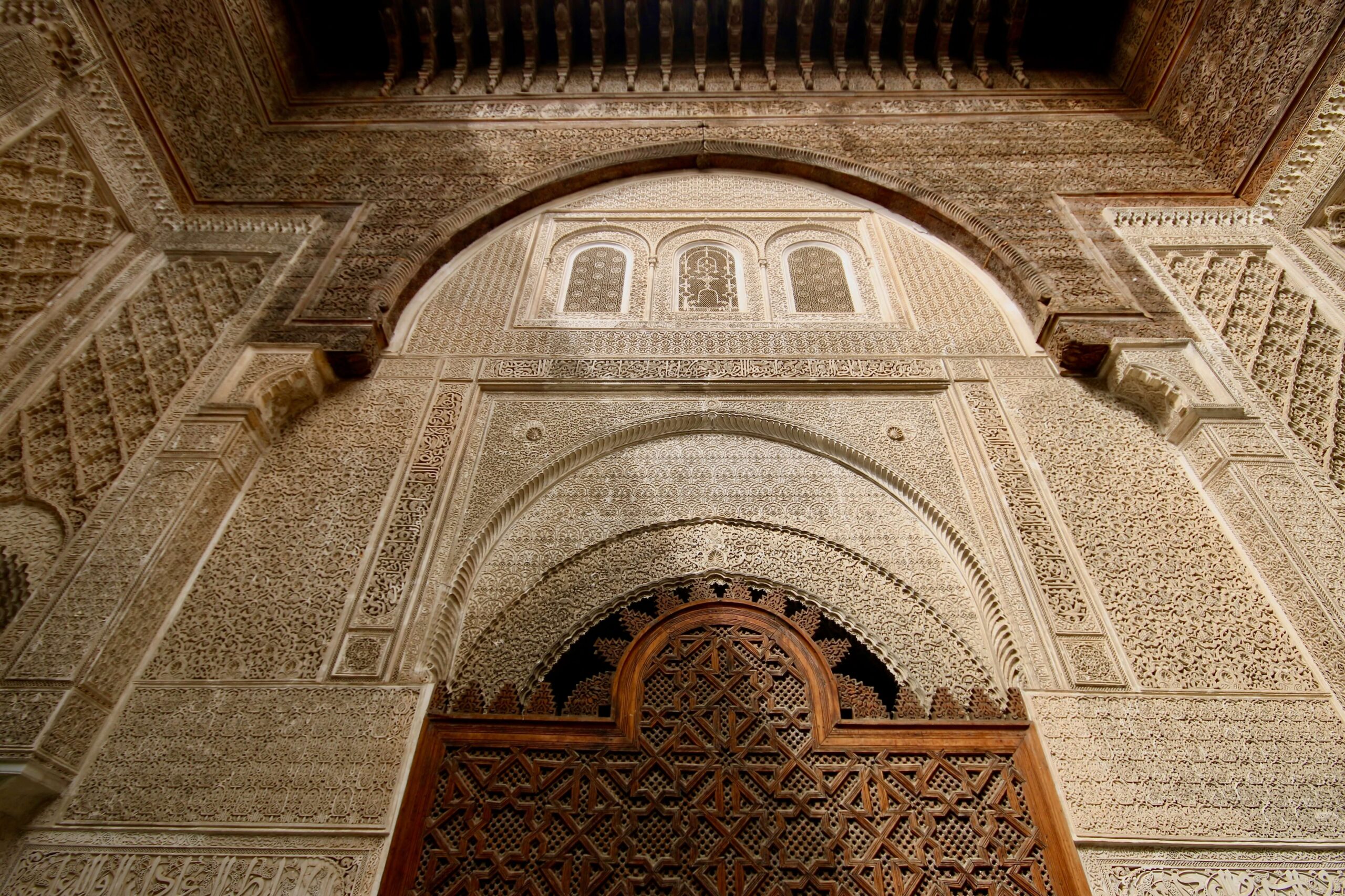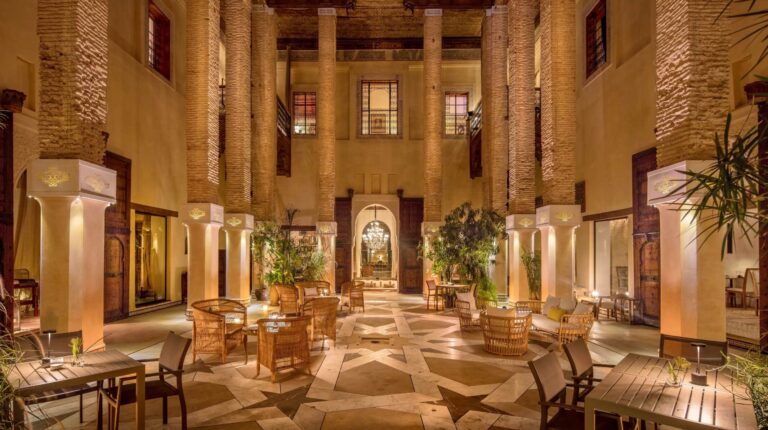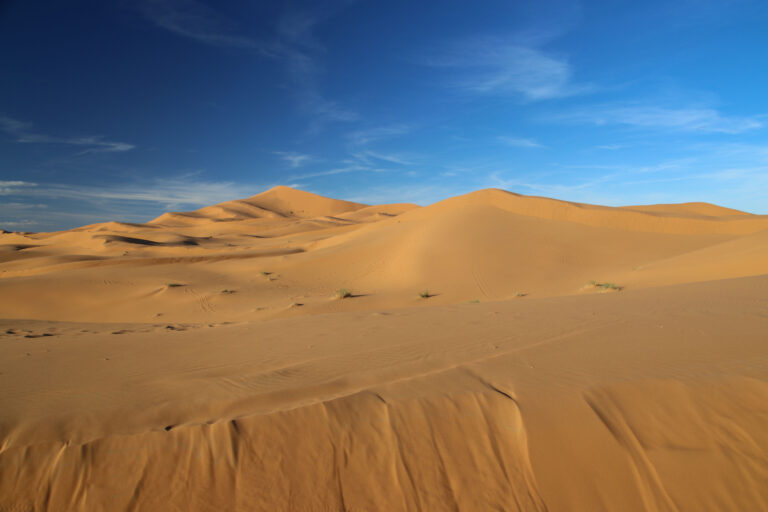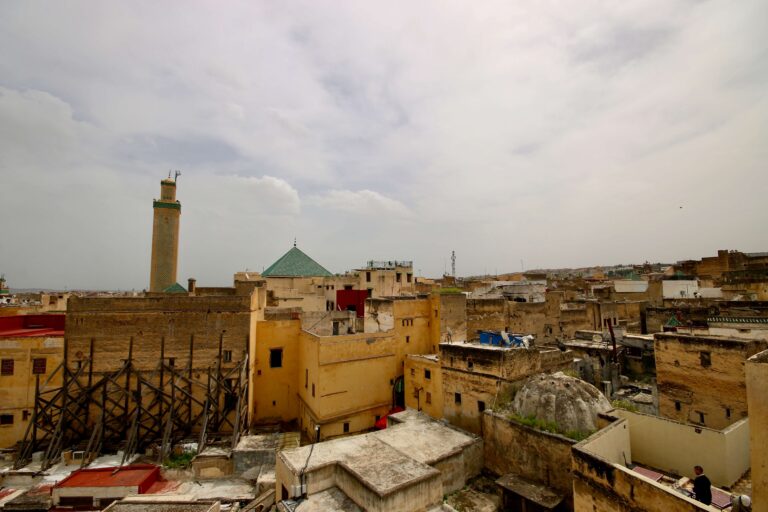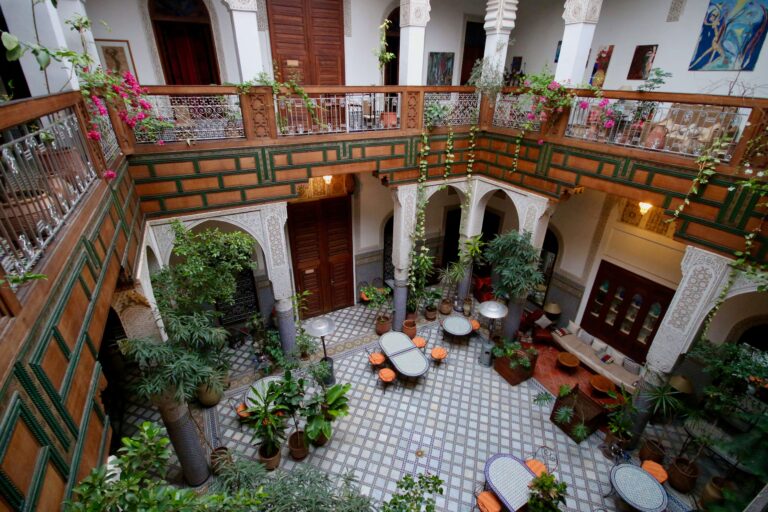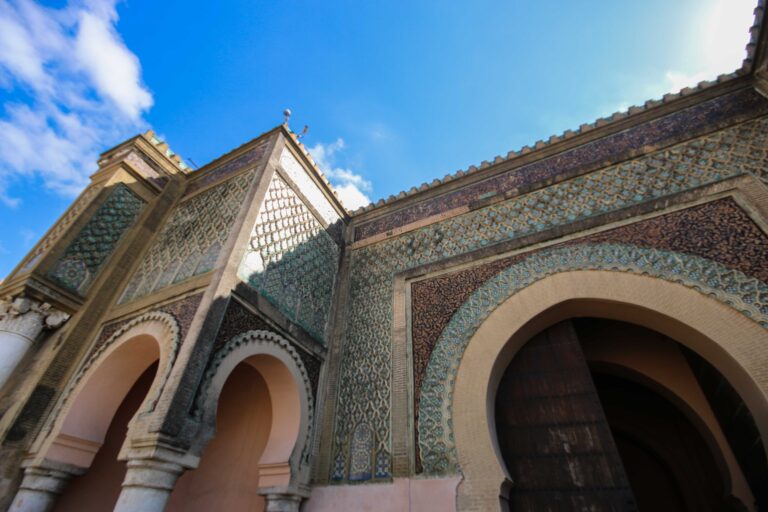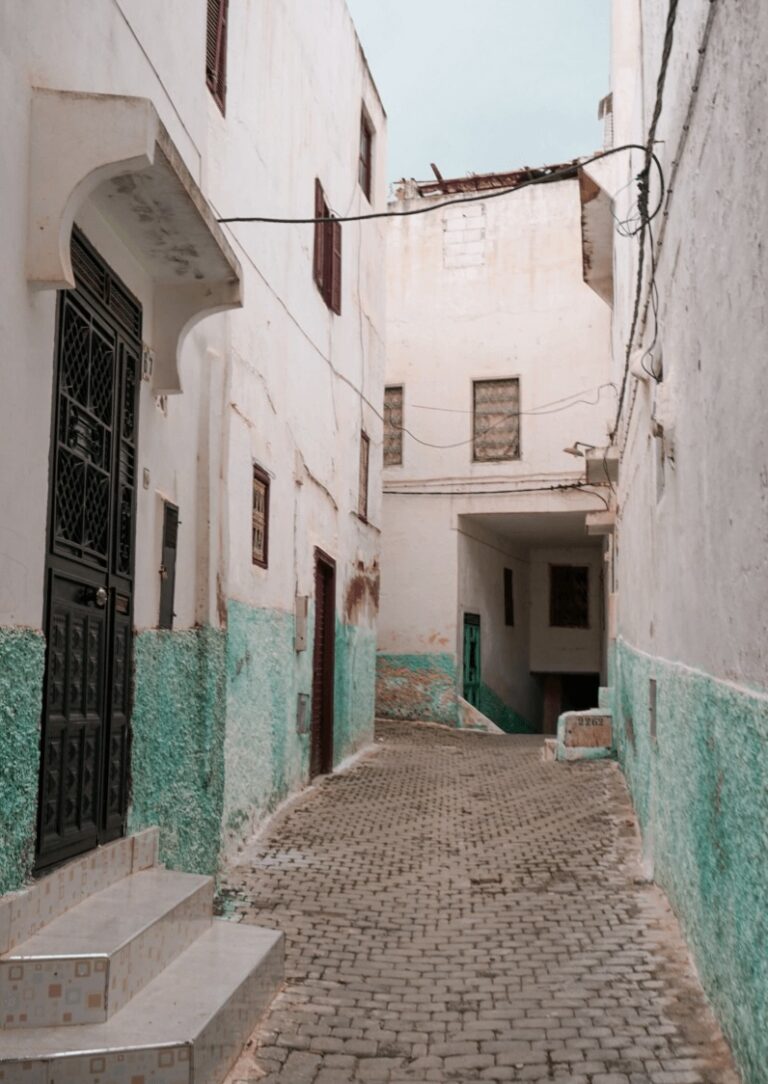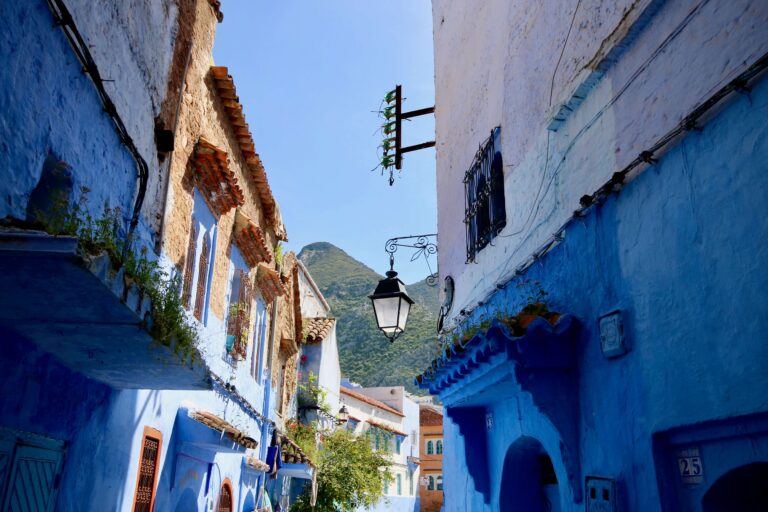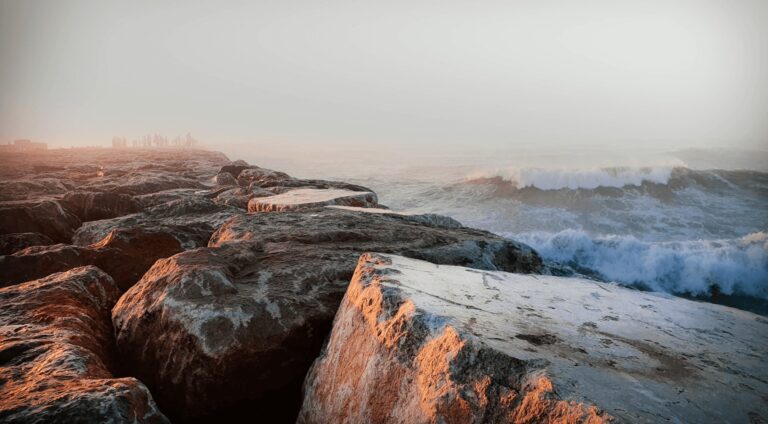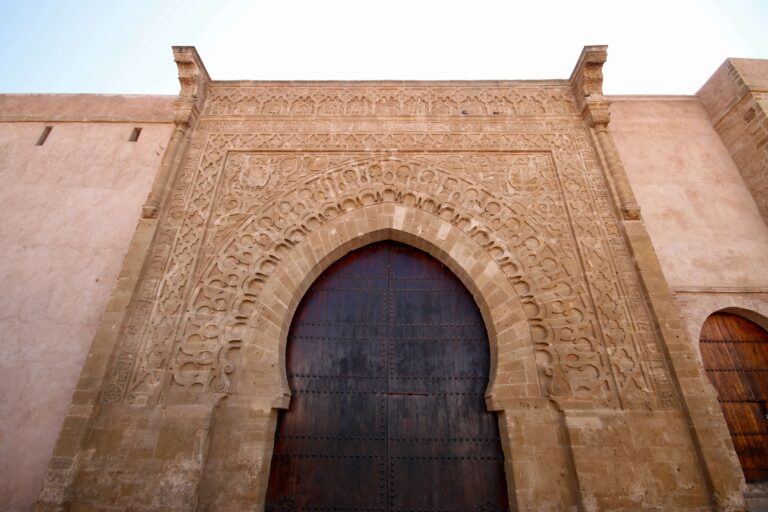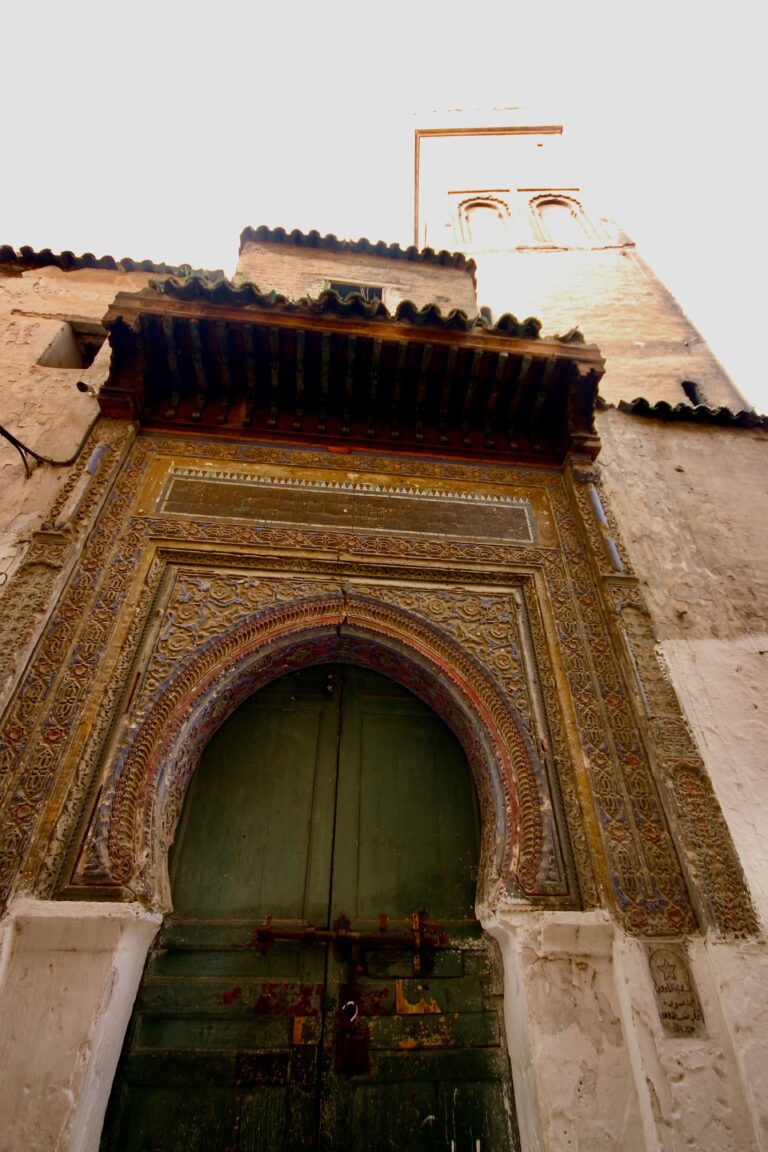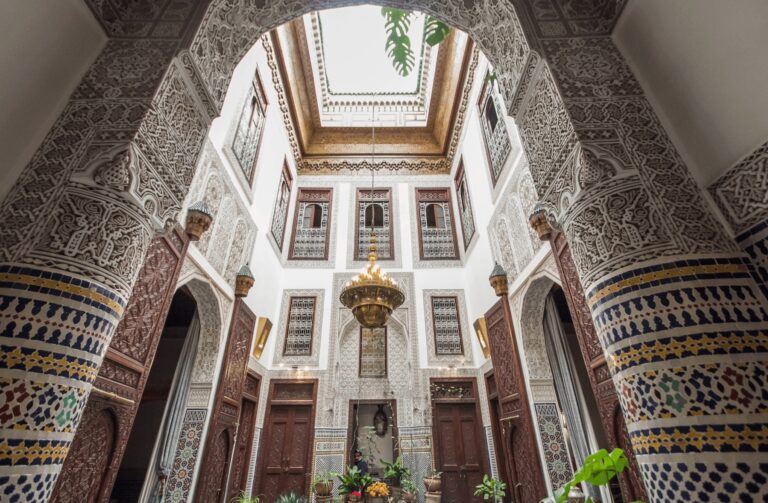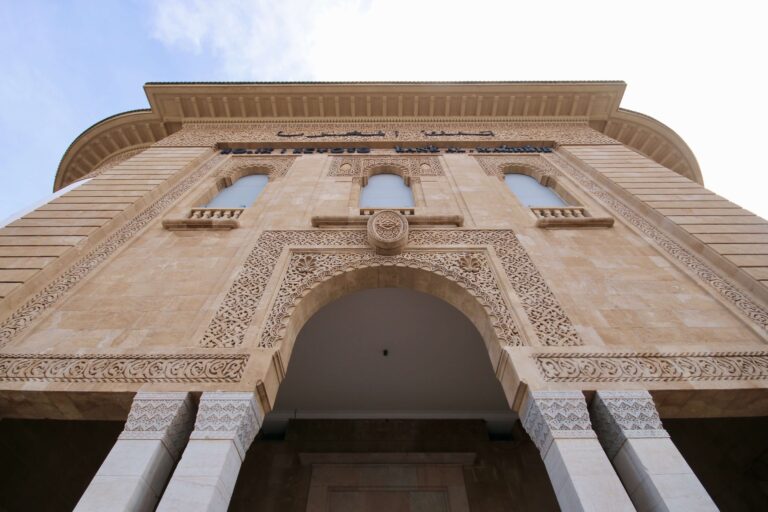7 Best Museums in Fes: Madrasas + Palaces + Caravanserais
From beautifully restored madrasas to historic inns and a hilltop fort, discover 7 of the best museums in Fes.
Founded in the 8th century by Idriss I, Fes is the oldest of Morocco’s four imperial cities. In my opinion, it’s a must-visit destination in the country’s north.
At the heart of this historic metropolis lies Fes el-Bali, a labyrinthine medina of twisting alleyways and bustling souks. Here, skilled artisans continue to practice the same crafts that have graced the city’s mosques, madrasas and palaces for centuries.
To truly immerse yourself in the city’s storied past, I’d highly recommend visiting some of the best museums in Fes. These occupy beautiful palaces, riads and madrasas.
Not only will you discover everything from ancient weaponry and royal regalia to exquisite examples of Moroccan woodwork, but you’ll enjoy a respite from the hustle and bustle of the medina outside.
In this article, I’ll introduce 7 of the best museums in Fes, including a 16th-century fort, an active synagogue and a recently restored palace.
For more information about visiting this ancient city and the best museums in Fes, check out my Essential Travel Guide to Fes.
If you’re looking for accommodation recommendations, I’ve put together a list of the best riads in Fes. Alternatively, you can browse some of the best Fes tours and day trips.
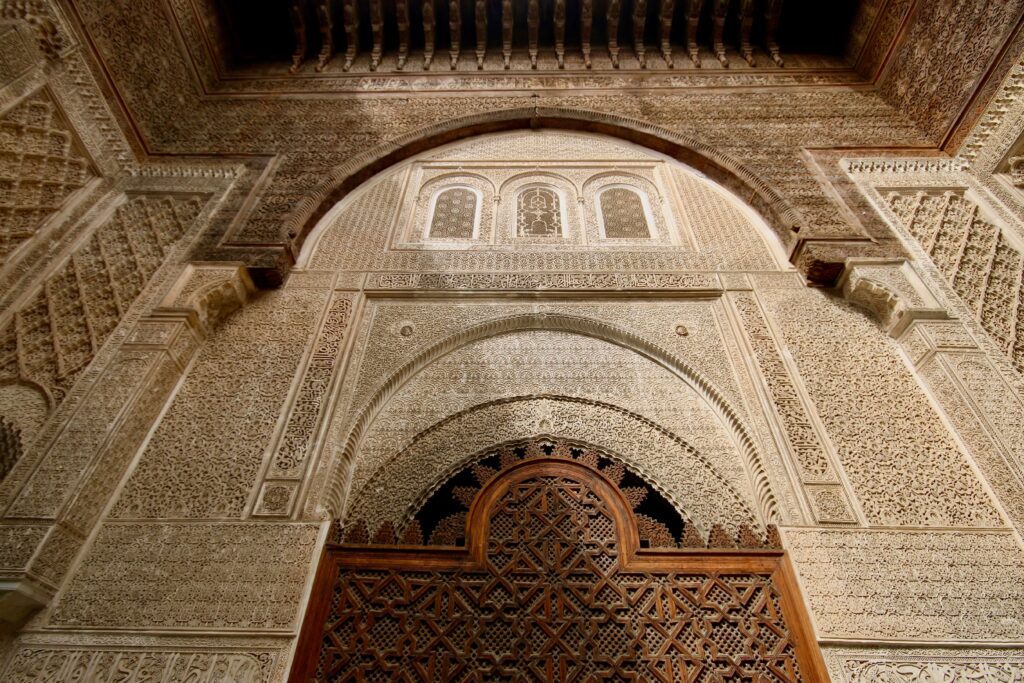
Disclosure: This article contains affiliate links, meaning I earn a small commission when you make a purchase. Affiliate links cost you nothing and ensure my content stays free!
Dar Batha Museum of Islamic Arts
Commissioned by the Alaouite Sultan Hassan I in the late 19th century and completed under his successor Abdelaziz, this magnificent palace is a testament to Morocco’s architectural and artistic brilliance.
Dar Batha has recently undergone an extensive restoration and reopened as a museum. Today, it boasts a vast collection of over 6,500 historical artefacts and crafts.
I was lucky enough to visit Dar Batha just after it reopened. For me, it is most definitely one of the best museums in Morocco.
Among the highlights of Dar Batḥa is its ceramic collection. It is widely considered one of the oldest and most impressive in the Arab world.
Featuring pieces dating back to the beginning of the 14th century, it reflects the skilled artistry of Fes’s master craftsmen. I love the videos where you can see ceramicists at work.
I also appreciate the timeline explaining Morocco’s history of successive rulers, something that I sometimes struggle to get my head around.
After your visit, be sure to stroll through the palace gardens, which embody a quintessential Andalusian aesthetic. They really are stunning and the perfect place to relax while admiring the surrounding architecture.
Information at Dar Batha is provided in English, French and Darija and there is a lot to take in. I’d recommend spending at least an hour and a half here.
Keep in mind that DSLR cameras are not allowed (you can have them in your bag but no pics). However, photos are allowed using phone cameras.
You can learn more about visiting Dar Batha and what to expect in my detailed article here.
Opening hours of Dar Batha: 10 am to 6 pm (closed Monday)
Entrance fee for Dar Batha: 60 dh
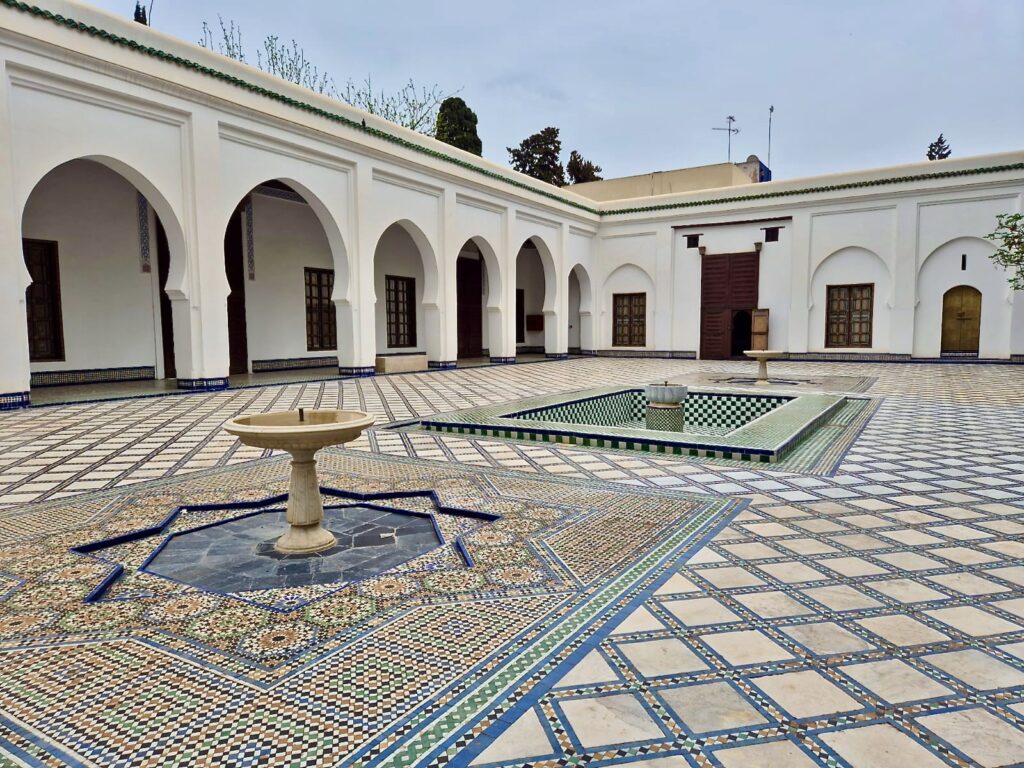
Bou Inania Madrasa
Constructed between 1350-1355 CE under the patronage of Sultan Abu Inan Faris, this magnificent Islamic school reflects the height of Marinid craftsmanship. From its green-tiled minaret (visible from afar) to the intricate beauty of its internal courtyard, Bou Inania is a masterpiece.
In fact, Bou Inania is also one of the only madrasas in Morocco that still functions as a congregational mosque.
Upon entering, you’re greeted by an exquisite central courtyard adorned with the signature elements of Marinid design. Carved stucco patterns cover the walls, complemented by vibrant zellije tilework.
Overhead, the courtyard is capped by a wooden latticework ceiling that casts a warm shadow over the space below.
While the prayer hall section of Bou Inania is off-limits to non-Muslim visitors, the rest of the complex is open for all. However, it does close during prayer times, so schedule your visit accordingly.
Top tip:
If you want to capture people-free images, I recommend visiting Bou Inania just after the madrasa opens in the morning or following prayers when things are a bit quieter.
In my opinion, the Bou Inania Madrasa is an architectural highlight of visiting Fes and one museum you shouldn’t miss!
Opening hours of the Bou Inania Madrasa: 9 am to 6 pm
Entrance fee for the Bou Inania Madrasa: 20 dh
Together with Al Attarine (detailed below), Bou Inania is one of the most beautiful madrasas in Fes.
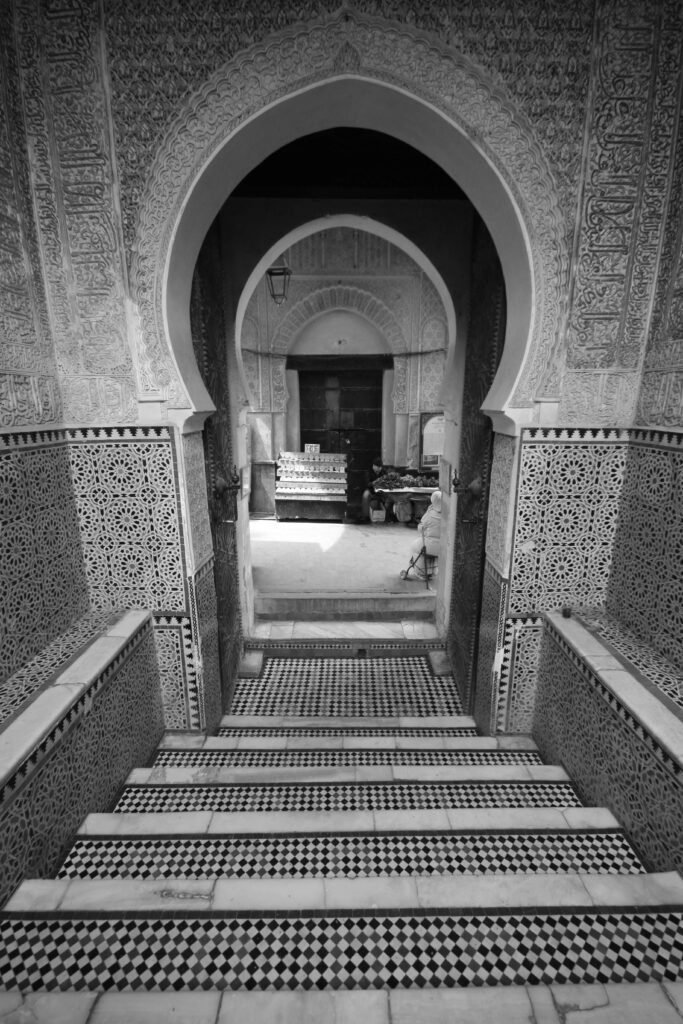
Museum of Arms – Borj Nord
Established in 1582 by the powerful Saadi dynasty is this impressive fort. It was modelled after the fortified Portuguese outposts that dotted the region in the 16th century.
Borj Nord is notable for its incorporation of European-influenced military architecture, reflecting the technological advancements that were transforming warfare at the time.
Today, the fort has been repurposed to house the Museum of Arms, which was established in 1963. It features over 5,000 pieces originating from 35 different countries. They span from prehistory all the way to the 20th century.
During your visit, you can admire an extensive array of Moroccan arms. Many of these were produced in Fes at the Makina, an industrial arms factory established in 1886 adjacent to the city’s Royal Palace.
One of the museum’s most noteworthy artefacts is an enormous Saadian cannon. It was used during the 1578 Battle of Three Kings (considered one of the greatest Portuguese military defeats in history).
While this museum is a “must” for military buffs, I’d also recommend visiting for the panoramic views of Fes that are on offer from its elevated setting.
Please note that taking photographs inside Borj Nord is not allowed.
Opening hours of the Museum of Arms: 9 am to 6 pm
Entrance fee for the Museum of Arms: 20 dh
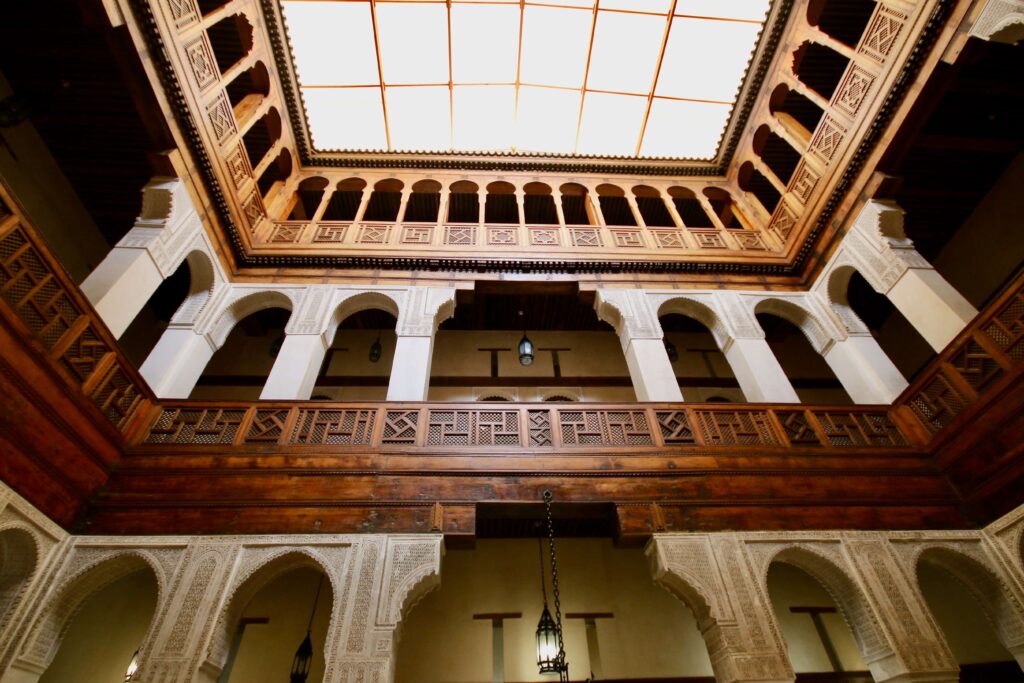
Nejjarine Museum of Wooden Arts & Crafts
Occupying a historic funduq, or caravanserai, the Nejjarine Museum showcases the remarkable artistry and skill of local artisans. This gorgeous building overlooks Al-Najjarin Square, notable for its striking fountain. Honestly, it is one of my favourite places to visit in Fes.
Once a hub for merchants, traders and visitors to the city, Funduq al-Najjarin provided them with a place to rest, store their goods and engage in commercial activities. Today, it houses a stunning collection of decorative objects, musical instruments and exquisite furnishings. Many illustrate the difference between Amazigh traditions and Andalusian designs.
Highlights of the Nejjarine Museum’s collection include the awe-inspiring door of the nearby Bou Inania Madrasa, together with wooden boards once used for Quranic recitations.
If you love woodwork (like I do), this is definitely one of the best museums in Fes to visit. The inclusion of captions in Arabic, French and English makes it an informative experience for various language groups.
After your visit, you can grab a drink at the rooftop cafe, which offers wonderful views over the medina.
While photos of the interior courtyard are allowed, you can’t take pics of the exhibits themselves.
Opening hours of the Nejjarine Museum of Wooden Arts & Crafts: 10 am to 5 pm
Entrance fee for the Nejjarine Museum of Wooden Arts & Crafts: 30 dh
You can learn more about visiting the Nejjarine Museum and what to expect in my detailed article here.
Riad Belghazi
Housed within a 17th-century palace, Riad Belghazi is a private museum that’s run by the family who live here. What sets this museum apart from others in Fes is that fact that many of the artefacts on display are available for purchase.
For antique lovers or those looking for a one-of-a-kind souvenir, you may just find it here!
The architectural details of Riad Belghazi serve as the perfect backdrop for the museum’s collections. Many showcase the remarkable skills and techniques of Moroccan artisans.
In the first room, you’ll find antique silver jewellery dating back to the early 18th century. Meanwhile, the second room houses a stunning collection of silver pieces from the Saharan region.
In the third room, you’ll find gold jewellery hailing from not only Fes but also Rabat and Tetouan. Additional rooms at this Fes museum exhibit Moroccan caftans, embroidered textiles and musical instruments.
If you’re travelling with kids, they’ll love the opportunity to dress up like a local and have their picture taken. This is definitely one of the best museums in Fes for families.
Someone is usually on hand to guide you through the collection but a “tip” will likely be expected. Ask in advance if these situations make you feel uncomfortable. The rooftop terrace has wonderful views and drinks (tea, coffee and fresh orange juice) can be purchased onsite.
Opening hours of Riad Belghazi: 9 am to 5:30 pm
Entrance fee for Riad Belghazi: 40 dh
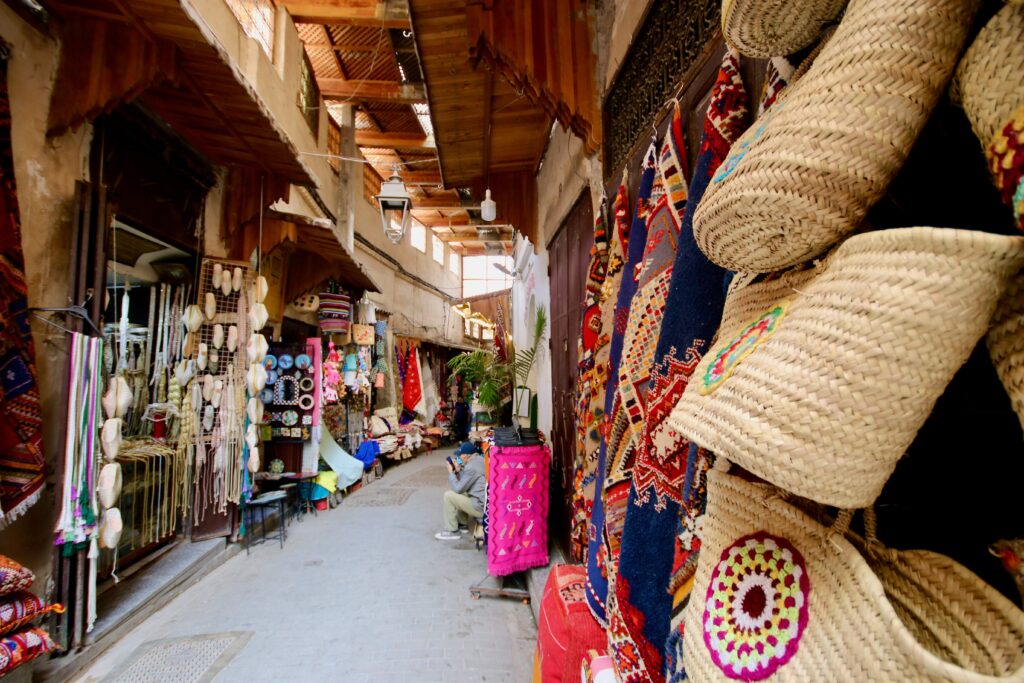
Ibn Danan Synagogue
Built in the 17th century to serve the Megorashim (Jews expelled from Spain), this synagogue reflects the religious diversity of Fes in times gone by. It forms part of the Mellah, once the largest Jewish quarter in Morocco, and lies a short stroll from the Mansano Synagogue.
Both of these buildings have been preserved with the help of the World Monuments Fund.
When visiting the Ibn Danan Synagogue, you’ll notice a combination of Islamic and Moroccan design elements incorporated into the design. This is particularly noticeable in the stucco decorations and the tiled border of the wooden ark doors.
Take note of the octagonal pillars and the green herringbone floors, as well as the Moorish arched filigree screen.
Descending into the basement, you can see the mikvah, or ritual bath, filled by an underground water source. This was once an integral part of religious life in the community.
Throughout the space, black and white photographs of other Moroccan Jewish sites are displayed. These offer a broader glimpse into the country’s Jewish heritage.
Opening hours of the Ibn Danan Synagogue: 9 am to 5 pm (closed Saturdays)
Entrance fee for the Ibn Danan Synagogue: Donation
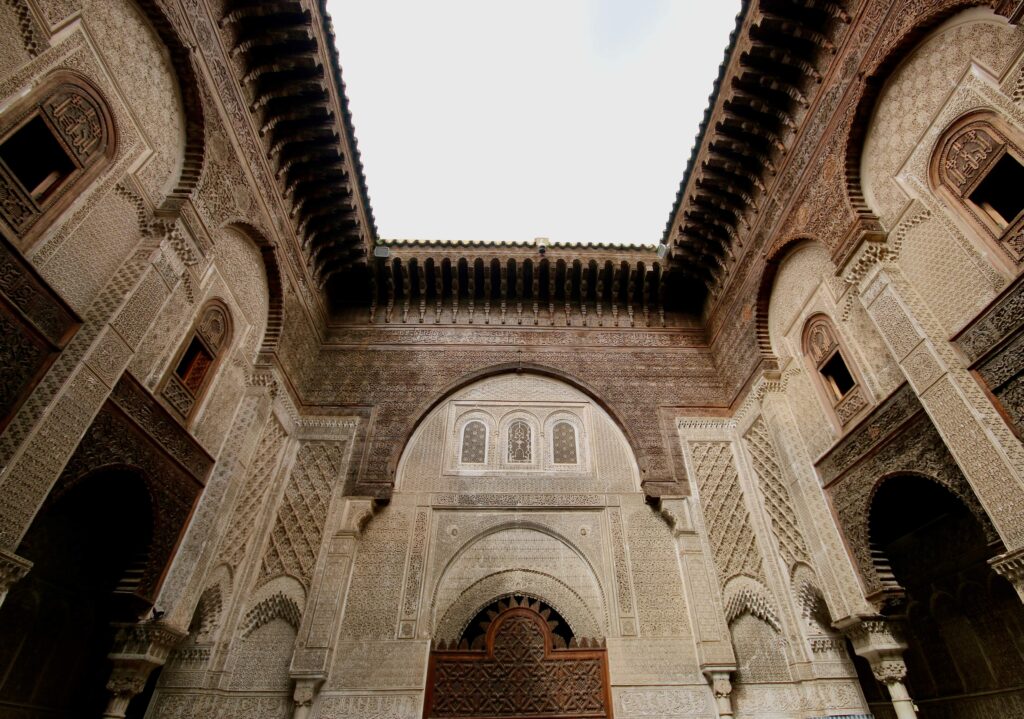
Al-Attarine Madrasa
Built in the early 14th century by the Marinid Sultan Uthman II Abu Said, this former religious school takes its name from the nearby Souk al-Attarine. This bustling spice and perfume market has long been integral to commercial life in Fes.
Recently restored, Al-Attarine really is an architectural masterpiece that shouldn’t be missed when visiting the city.
Every time I step into the madrasa’s galleried courtyard, I’m struck by the attention to detail that adorns every surface, from the zellije tilework to the ornately carved stucco and the delicate cedar woodwork.
As a place of learning, students would study Quranic teachings at Al-Attarine, before progressing to the prestigious University of Al-Quaraouiyine next door.
The square prayer hall, with its soaring ceilings and ornate mihrab, is a particular highlight. It showcases the Marinids’ ability to create spaces that are both functionally efficient and aesthetically breathtaking.
Beyond the main courtyard are the upstairs sleeping quarters that once housed the madrasa’s students. They offer a more austere glimpse into the daily life of this historic institution. You can capture some fantastic photos across the rooftops of Fes through the upstairs windows.
Opening hours of the Al-Attarine Madrasa: 9 am to 6 pm
Entrance fee for the Al-Attarine Madrasa: 20 dh

PLAN YOUR TRIP WITH MY FAVOURITE RESOURCES:
Find hotels via Booking
Book tours and attractions via Viator or GetYourGuide
Find a rental car via Discover Cars
Book flights via Kiwi or Booking
Search for buses and trains via 12Go or Omio
Get travel insurance via SafetyWing
Buy a digital eSIM with Airalo
By purchasing through my links, you’ll be supporting my website at no additional cost to you
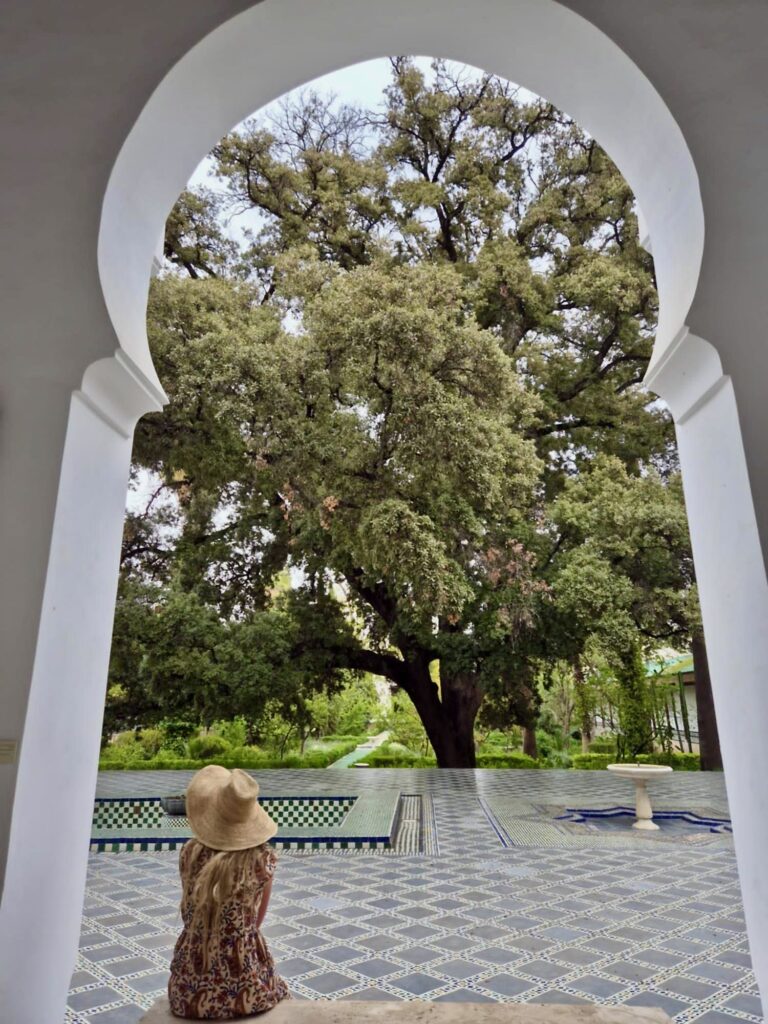
About Me
I’m Malika, a global traveller who first visited Morocco in 2014 before marrying a local and settling down in a little village on the Atlantic coast. Over the years, I’ve developed an intense love for Morocco, its incredible landscapes, storied cities and the exceptionally generous hospitality of its people.
Malika in Morocco is a place to share my years of experience exploring the country, from north to south and from the Atlantic Ocean to the Sahara Desert. As a resource for travellers visiting Morocco, I want to encourage others to experience this captivating destination the way they desire, whether that’s independently or under the expert guidance of local tour operators.
I believe strongly in supporting responsible and sustainable tourism initiatives while inspiring travel experiences that are life-impacting and mutually beneficial for both travellers and locals.
-
8 Best Luxury Hotels in Fes: Morocco’s “Cultural Capital”
Looking for the best luxury hotels in Fes? Explore this curated collection of high-end stays, including beautifully restored riads and modern retreats. Hidden gems and historic treasures await in Fes, Morocco’s cultural capital. Stays here are all about wandering through the maze-like medieval medina, uncovering artisanal wares in the souks and marvelling at the centuries-old…
-
4 Unforgettable Tours to the Sahara Desert from Fes
Looking for the best tours to the Sahara Desert from Fes? Explore this curated collection of multi-day trips, including budget-friendly small group adventures and private desert tours in Morocco. If there’s one experience that’s high on many travellers’ lists when visiting Morocco, it’s spending a night in the Sahara Desert. Having been lucky enough to…
-
5 Best Food Tours and Experiences in Fes: Home of Fassi Cusine
Looking for the best food tours in Fes or foodie-related experiences? Discover five incredible ways to experience Fassi cuisine and culture in one of Morocco’s oldest cities. Home to one of the world’s oldest cuisines, Morocco is a deservedly popular destination for foodies. It’s also a destination I’ve been lucky enough to eat my way…
-
11 Highly-Rated Riads in Fes: Morocco’s “Cultural Capital”
Looking for the best riads in Fes? Discover 11 inspiring places to stay in this ancient city, all of which abound with the charm of traditional Moroccan residences. Fes is one of Morocco’s most storied cities, with a history stretching back to the 8th century. It’s an incredible place to visit, not only for its…
-
An Imperial Gem: Essential Travel Guide to Meknes
Looking for the best things to do in Meknes or highly recommended places to stay? Discover the ideal time to visit, tips for getting around and the best tours in this essential travel guide to Meknes. Located less than an hour’s drive from Fes, Meknes is often overlooked by travellers, despite its historical significance as the…
-
A Holy Town: Essential Travel Guide to Moulay Idriss Zerhoun
Looking for the best things to do in Moulay Idriss Zerhoun or highly recommended places to stay? Discover the ideal time to visit, tips for getting around and the best tours in this essential travel guide to Moulay Idriss Zerhoun. Perched dramatically on the slopes of the Khyber and Tazga hills, Moulay Idriss Zerhoun is…
